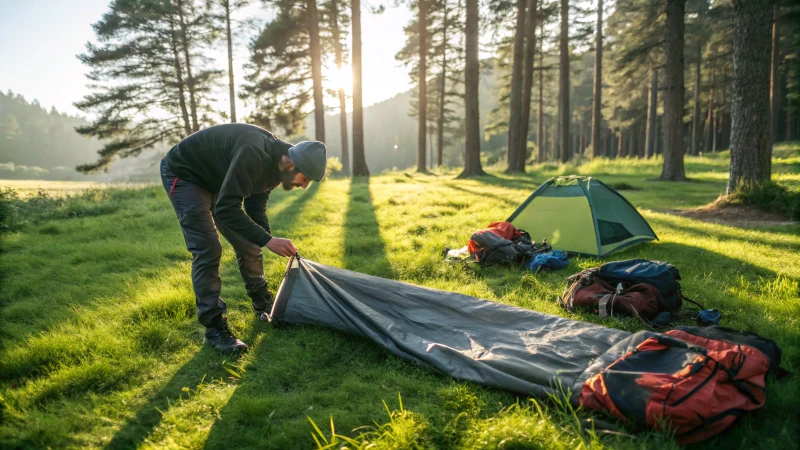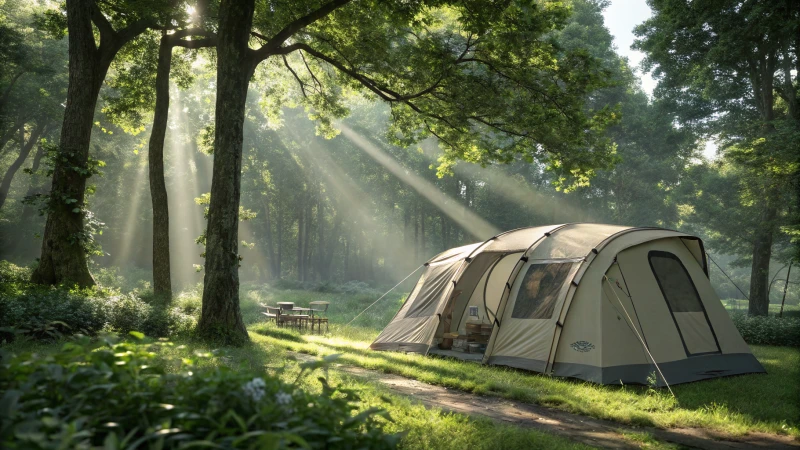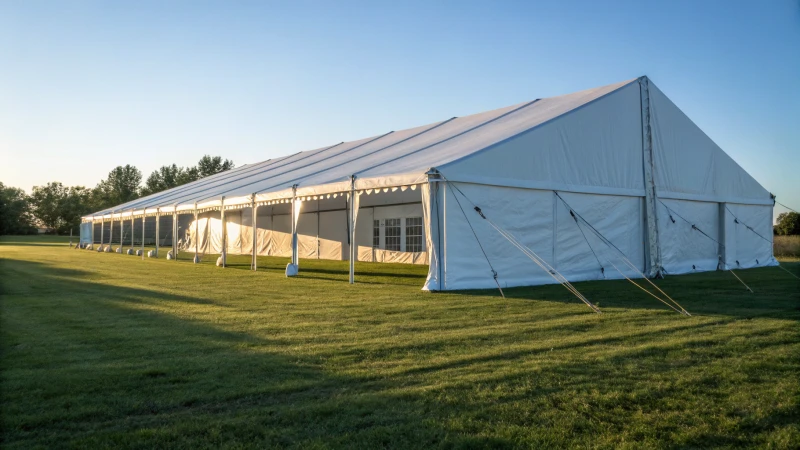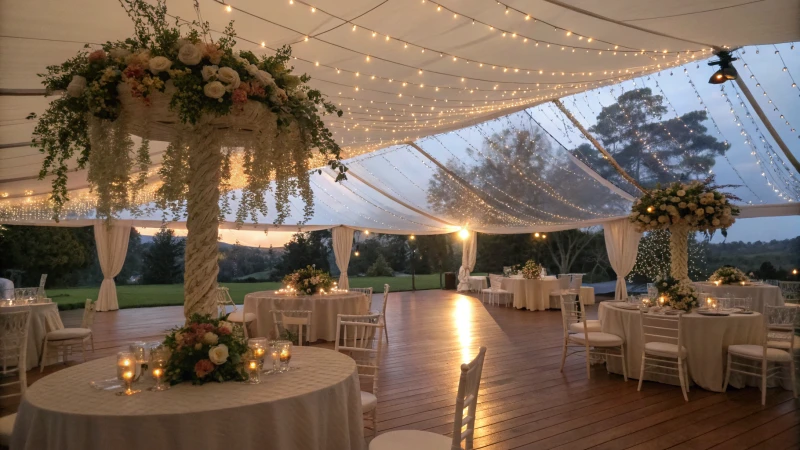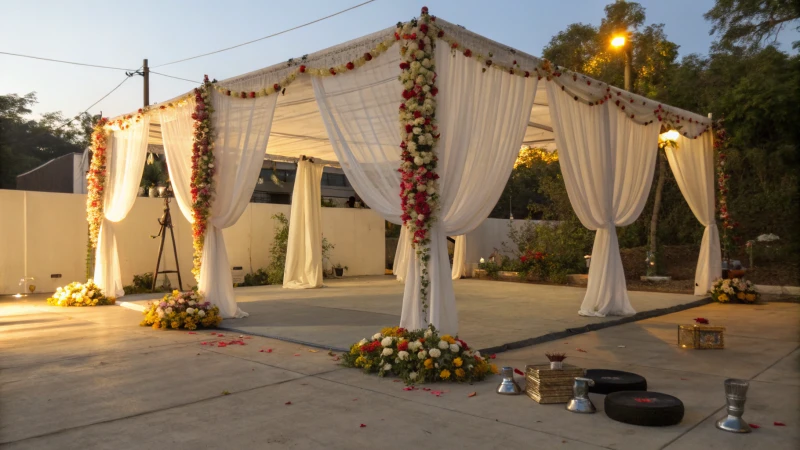
Planning a big event and wondering where to find the perfect party tent? I’ve been there, and I’ve got some insights to share!
To purchase large party tents, you can either connect with local distributors or look towards China. Chinese manufacturers are known for their advanced technology and competitive pricing, making them an attractive option for many.
I’ve spent countless hours browsing through options, weighing the pros and cons of local versus international suppliers. While China’s manufacturers offer cutting-edge technology at great prices, sometimes the personal touch of a local distributor can make all the difference. Let’s explore these options together to find what suits your needs best.
Chinese manufacturers offer competitive pricing on party tents.True
Chinese manufacturers are known for competitive pricing due to lower production costs.
Local distributors never offer advanced technology in party tents.False
Local distributors can offer advanced technology, depending on their suppliers.
What Are the Advantages of Buying Tents from China?
Ever wonder why so many people are choosing China for their tent needs?
Buying tents from China is a smart choice thanks to cost-effectiveness, high-quality materials, and a variety of designs. Chinese manufacturers are known for their efficiency, leveraging advanced technology and a strong supply chain, making them a go-to for sourcing tents worldwide.

Cost Effectiveness
When I first started exploring options for sourcing tents, I was amazed by how much I could save by purchasing from China. With their robust manufacturing infrastructure, Chinese suppliers offer prices that are hard to beat, especially when buying in bulk. The cost savings are even more pronounced due to their expertise in aluminum production1 and PVC materials.
High-Quality Materials
Quality was my top concern. Thankfully, Chinese manufacturers didn’t disappoint. They use cutting-edge production techniques, and the materials are top-notch. I often receive products with international certifications2 like TUV, CE, and ISO, ensuring that the tents are not only durable but also meet global safety standards.
Diverse Designs
The variety is incredible! From elegant wedding tents3 to sturdy industrial ones, there’s something for every occasion. What’s more, the customization options allow me to get tents that perfectly fit my clients’ needs, making each event unique and memorable.
Comprehensive Sourcing Options
One of the best parts? It’s like having a one-stop shop. Apart from tents, I can also source essentials like lighting, tables, and chairs4, which streamlines logistics and keeps everything cohesive.
Flexible Services
Working with small to medium-sized enterprises in China has been a game-changer. They provide personalized services and offer installation support5, which is fantastic for tailoring solutions that meet my specific needs.
| Feature | Benefit |
|---|---|
| Cost-effectiveness | Affordable pricing, especially in bulk |
| Material Quality | Durable and certified materials |
| Design Variety | Wide range of customizable designs |
| Sourcing Convenience | Accessory and equipment procurement |
| Service Flexibility | Personalized service and installation help |
These benefits have made Chinese tent manufacturers my preferred choice, ensuring I get value through competitive pricing and top-notch quality. I often explore more options through reputable trade shows6 or by directly contacting suppliers, keeping my business ahead of the curve.
Chinese tents are more expensive than Western alternatives.False
Chinese tents are known for their cost-effectiveness due to efficient manufacturing.
Chinese tent manufacturers offer customizable designs.True
They provide a wide range of designs and customization options for buyers.
What Are the Differences Between Large Manufacturers and Smaller Suppliers?
Choosing between big manufacturers and smaller suppliers feels like a crossroads, where each path holds distinct possibilities and challenges. Which direction aligns best with your journey?
Large manufacturers provide significant production power and brand prestige, whereas smaller suppliers excel in cost-effectiveness and personalized service. Your choice should reflect your business needs, considering factors like project scale and customization requirements.
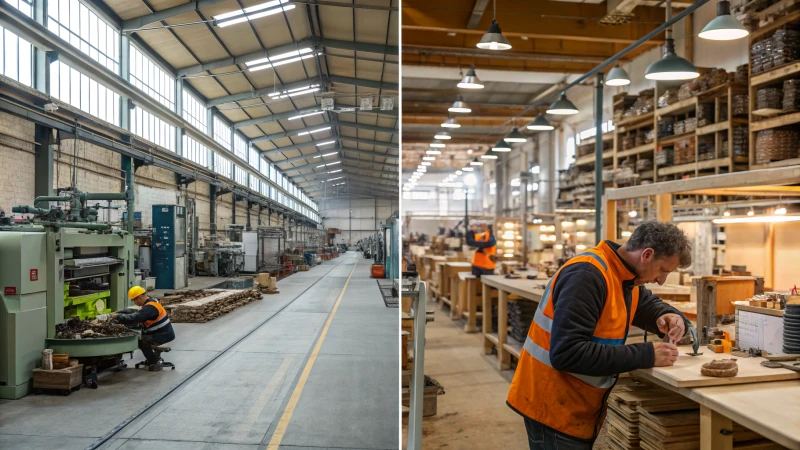
Production Capabilities
Reflecting on my own experiences, I’ve noticed that large manufacturers often remind me of a well-oiled machine, capable of handling massive production volumes thanks to their advanced machinery and streamlined processes. This is a dream come true when you’re racing against time and need thousands of units produced without a hitch. It’s like having a reliable partner who never lets you down during crunch time.
On the flip side, smaller suppliers often bring to mind a cozy corner shop where everyone knows your name. They might not have the same scale, but their ability to adapt and cater to niche markets or special requests is unparalleled. I’ve seen them adjust on the fly to meet unique demands, offering customization that’s hard to find elsewhere.
| Factor | Large Manufacturers | Smaller Suppliers |
|---|---|---|
| Production Scale | High | Moderate |
| Flexibility | Low | High |
Cost Considerations
When it comes to costs, large manufacturers can benefit from economies of scale7, potentially lowering per-unit costs. However, I’ve learned that this doesn’t always mean you’ll save money as a client. Their overhead can inflate prices significantly, reminding me of times when I expected a bargain but ended up with a heftier bill.
Smaller suppliers, however, often work with leaner operations. They’ve offered me competitive pricing8 that aligns well with budget constraints without compromising quality—a relief when every dollar counts.
Customization and Service
Customization is where smaller suppliers shine brightly. They offer tailored solutions and personalized services that remind me of those rare customer experiences where you feel genuinely valued. They’ve provided me with unique product tweaks and hands-on support that larger manufacturers often can’t match due to their rigid processes.
In contrast, large manufacturers often stick to standardized methods, ensuring consistent quality and reliability—something I’ve come to appreciate when stability is non-negotiable.
Market Influence and Stability
The market influence and stability of large manufacturers are undeniable. Partnering with them often gives a sense of security akin to driving a trusted car brand. Yet, I’ve noticed this sometimes limits personal interaction—important for building those deep business relationships I value.
Meanwhile, smaller suppliers may not command the same market presence but excel in nurturing strong client connections. Their direct communication channels foster trust, making me feel more like a partner than just another client number.
For those seeking more guidance on choosing the right supplier size for their business needs, these decision-making strategies9 could offer valuable insights.
Large manufacturers have higher production scales than smaller suppliers.True
Large manufacturers use advanced machinery for high-volume demands.
Smaller suppliers offer less customization than large manufacturers.False
Smaller suppliers excel in tailored solutions and personalized service.
What Certifications Should I Look For When Purchasing Tents?
Buying a tent? It’s not just about the color or size; it’s about ensuring it can withstand the unexpected. Let’s dive into the certifications that matter most.
When buying a tent, look for NFPA 701, CPAI-84, and ISO 9001 certifications. These ensure your tent is fire-safe, durable, and meets quality standards, giving you peace of mind.
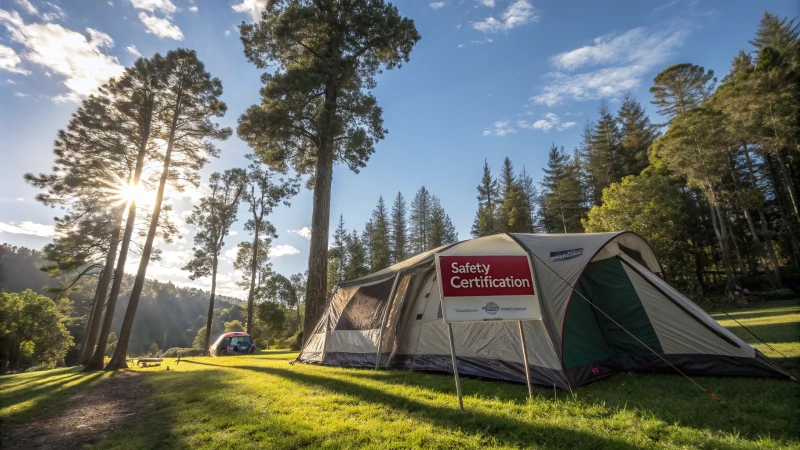
Understanding Tent Certifications
Certifications play a vital role in ensuring the quality and safety10 of tents. Each certification reflects a specific aspect of tent performance, from fire safety to quality management. Here’s a breakdown of essential certifications:
| Certification | Focus Area |
|---|---|
| NFPA 701 | Fire Safety |
| CPAI-84 | Flame Retardancy |
| ISO 9001 | Quality Management |
| CE Mark | Conformity with European Standards |
Fire Safety Certifications
Fire safety was my top concern. I wanted to know everyone would be safe under that tent. NFPA 701 and CPAI-84 stood out as essential certifications for ensuring the fabric wouldn’t easily catch fire. These are critical if you’re setting up in places where fire safety regulations are stringent or if you’re just like me—wanting that extra peace of mind.
NFPA 701 tests the flame resistance of tent fabrics, ensuring they will not easily catch fire. CPAI-84 is a similar standard often required in the U.S. for tents used in camping or events.
Ensuring your tent has these certifications can prevent disastrous outcomes during unforeseen events.
Quality Management Certifications
Quality management is another crucial factor. I can’t count how many times I’ve seen poor quality lead to last-minute panic. ISO 9001 certification was my go-to. It reassured me that the manufacturer cared about quality and efficiency.
Having an ISO 9001 certified tent means you can trust in its durability and overall build quality, which is particularly important for tents used in events where reliability is paramount.
European Compliance: The CE Mark
If you’re purchasing from Europe, look for the CE mark. It’s the stamp of approval that your tent meets EU standards for safety and performance.
For those purchasing tents within Europe or from European manufacturers, this mark indicates compliance with EU safety, health, and environmental protection requirements.
Additional Considerations
On top of these certifications, I always check for warranties and service guarantees. It feels good to know that if something goes awry, help is just a phone call away.
Beyond these certifications, consider whether the tent includes warranties or service guarantees as such assurances can provide added peace of mind when investing in a high-quality product.
Always confirm these certifications with suppliers and get the documentation—it’s your safety net.
Remember, these certifications aren’t just formalities; they significantly enhance your purchasing decision11, ensuring you choose a tent that aligns with your needs and keeps everyone safe and comfortable.
NFPA 701 ensures tents are flame-resistant.True
NFPA 701 tests the flame resistance of tent fabrics, ensuring safety.
ISO 9001 focuses on fire safety standards for tents.False
ISO 9001 is about quality management, not specifically fire safety.
How Can I Ensure Quality and Timely Delivery?
Ever find yourself racing against the clock to deliver a project without compromising quality? I’ve been there, and I know the pressure! Let’s dive into how you can master both aspects effortlessly.
To ensure quality and timely delivery, establish clear communication with suppliers, implement a thorough quality control process, and utilize project management tools to track progress and deadlines efficiently.

Establishing Clear Communication with Suppliers
Picture this: I’m juggling multiple suppliers and trying to keep everything on track. It’s like spinning plates! But I’ve learned that setting up regular check-ins makes a world of difference. By discussing progress and nipping potential issues in the bud, I’ve found my groove. A well-defined communication protocol12 with clear contact methods and response times keeps everyone on the same page.
Implementing Quality Control Processes
There was a time when I almost shipped out a batch of tents with minor defects. Yikes! That’s when I realized the importance of a robust quality control process. Now, I use a simple table to track quality metrics, like this:
| Metric | Target Value | Actual Value | Status |
|---|---|---|---|
| Material Quality | 95%+ | 94% | At Risk |
| Delivery Time | 7 days | 6 days | On Track |
| Customer Feedback | Positive | Positive | On Track |
Regular inspections and feedback loops have become my go-to for maintaining high standards.
Utilizing Project Management Tools
Managing timelines used to feel like herding cats. Then, I discovered project management tools like Gantt charts13 and Kanban boards. They provide a clear visual of project status, deadlines, and who’s responsible for what. These tools help me spot bottlenecks early on, saving me from last-minute scrambles.
Building Reliable Relationships
I’ve found that having reliable suppliers is like having good friends—trustworthy and always there when you need them. I seek out partners with certifications like ISO, CE, or TUV. Investing time in these relationships has paid off in better negotiation power and priority in delivery schedules.
Investing in Training and Development
I remember the first time my team handled a complex installation without a hitch. The secret? Training! Regular workshops keep us sharp on the latest in quality assurance and project management. It’s an investment that pays dividends in efficiency and confidence.
By integrating these strategies into my operations, I’ve not only enhanced the quality of my products but also streamlined my delivery processes. For more insights into effective supply chain strategies, check out this supply chain management guide14.
Regular check-ins with suppliers prevent delivery delays.True
Consistent communication helps identify and resolve issues early.
Gantt charts are ineffective for tracking project timelines.False
Gantt charts provide a visual overview of project timelines and tasks.
Conclusion
Explore options for purchasing large party tents, comparing local distributors and Chinese manufacturers known for competitive pricing, high-quality materials, diverse designs, and personalized service.
-
Understanding China’s dominance in aluminum production explains its cost efficiency in manufacturing tents. ↩
-
Certifications like TUV, CE, and ISO ensure quality and safety in products. ↩
-
Exploring wedding tent options helps understand the diversity in design and customization. ↩
-
Knowing additional event supplies available can streamline planning and logistics. ↩
-
Installation support ensures ease of setup and use, highlighting supplier flexibility. ↩
-
Attending trade shows provides firsthand insight into products and networking opportunities. ↩
-
Learn how large manufacturers manage extensive production efficiently to meet high-volume demands. ↩
-
Understand how smaller suppliers keep costs low while maintaining quality through efficient operations. ↩
-
Discover decision-making strategies for choosing between large manufacturers and smaller suppliers. ↩
-
Discover essential certifications for tent safety and quality assurance, crucial for making informed purchasing decisions. ↩
-
Learn how to confirm the authenticity of tent certifications to ensure compliance with industry standards. ↩
-
Discover proven strategies to establish effective communication protocols with suppliers, ensuring alignment and preventing miscommunication. ↩
-
Learn how Gantt charts can streamline project management by providing clear visual timelines and helping manage task dependencies. ↩
-
Explore comprehensive strategies for enhancing supply chain management, improving efficiency, and ensuring timely delivery. ↩



